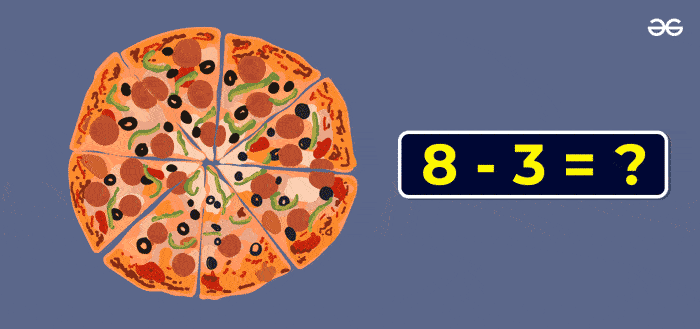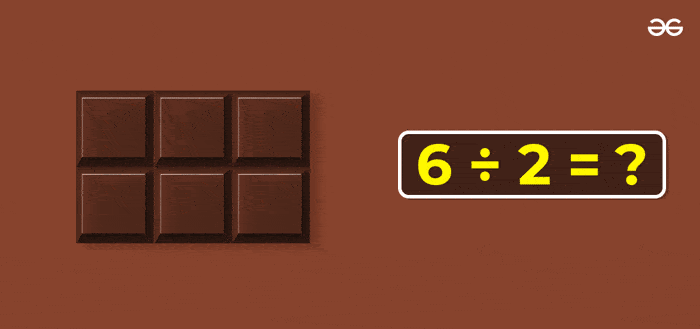Arithmetic is one of the oldest branches of Mathematics that deals with numbers and elementary operations on numbers. Arithmetic is fundamental to Mathematics as it is impossible to imagine the world of Mathematics without Arithmetic. Arithmetic is the introduction of mathematics as a subject to the students as the first thing learned by students in mathematics is arithmetic only.
Basic operations involved in arithmetic are addition, subtraction, multiplication, and division. In this article, we will learn about the basics of arithmetic and basic arithmetic operations in detail.
What is Arithmetic?
The branch of Mathematics that deals with counting, manipulation and basic operation of numbers is called Arithmetic.
Arithmetic is probably the oldest branch in the history of Mathematics. The word Arithmetic evolved from the ancient Greek word ‘Arithmos’ which means numbers. Human Beings can’t imagine their life without the use of Arithmetic Operations. We do basic calculations like addition, subtraction, multiplication, and division in our daily life.
Let’s learn about Basic Arithmetic Operations.
Arithmetic Operations
Basic Arithmetic Operations are the mathematical operations that involves basic calculations and are basic to mathematical calculations. We can’t imagine the Mathematical Calculation whether beginner or advanced without knowledge of Basic Arithmetic Operations. The basic arithmetic operations include the following:
- Addition
- Subtraction
- Multiplication
- Division
All these Arithmetic Operations are performed with Numbers and we know that digits form the numbers. Hence, these arithmetic operations are performed at the level of digits. Let’s learn about them in detail.
Addition – What is Addition?
Addition refers to the totaling of numbers. In addition we sum up all the numbers that we have. The result of addition is greater than the numbers which are added. Addition is represented by plus (+) symbol.
Addition is quite helpful in totaling up your bill, counting the number of articles you have. While the counting the numbers from 1, 2, 3, ….. and so on, the next number is obtained by adding 1 to the previous number. Thus every next number is called successor of previous number. For Example, 4 is obtained by adding 1 to 3 hence, 4 is successor of 3.
In the image attached below, there was one bird sitting on the branch of tree. Two more birds came and sat on the same branch. Thus the total number of birds sitting on the branch will be sum of 1 and 2 which is equal to 3.
.gif)
Example: Ram has 10 apples and he bought 5 more apples from the market. How many apples does he have now?
Initially Ram has 10 apples
Later he purchased 5 more apples
Hence, Ram has total 10 + 5 = 15 apples
Subtraction – What is Subtraction?
Subtraction is the method of finding difference between two numbers. Subtraction is opposite of addition. Subtraction is represented by minus (-) symbol.
Subtraction is useful in finding how much a number is larger or smaller than a given number. Subtrcation in Arithmetic is used in calculation of remaining amount or the money you have left with you after you spend some on purchasing goods.
In counting we can obtain previous number by subtracting 1 from the next number. The previous number is called predecessor of next number. For Example, we can get 3 by subtracting 1 from 4 i.e. 4 – 1 = 3. Hence, 3 is called predecessor of 4.
In the image attached below, there are 8 slices of pizza. Three slices are taken away thus we are left with 5 slices of pizza only.

Example: Mohan has 10 rupess in total. He spent 4 rupees to purchase a pen. How much money does he has left now?
Initially Mohan has 10 rupees
Money spent by Mohan to purchase pen = 4 rupees
Hence, Money left with Mohan = 10 – 4 = 6 rupees
Multiplication – What is Multiplication?
Multiplication is performed when we need to add same numbers for large number of times. Multiplication is represented by cross (⨯) symbol. Multiplication makes the counting easy in arithmetic.
When we multiply two numbers the result is called the product of two numbers. Instead of performing lengthy sum we simply multiply. To make multiplication easier we need to learn the multiplication tables of different numbers.
In the image attached below, there is a layer of three bricks. Now three layers of bricks each containing three bricks stack up making up total 3 ⨯ 3 = 9 bricks. Now three walls of 9 bricks stack up side by side thus total making up a block of 27 bricks.

Example: If John gave 2 chocolate to each of his 10 classmates on his birthday then what number of chocolate he distributed?
Total Number of Classmates = 10
Chocolate given to each classmate = 2
Hence, total number of chocolates distributed = 10 ⨯ 2 = 20
Division – What is Division?
Division is the method of distribution and finding the share of each person. Division is opposite of multiplication. Division is represented by the symbol (÷).
We generally divide a larger number by a smaller number. The number which is divided is called dividend and the number which divides the dividend is called divisor.
In the image attached below there are six chocolates which are divided in group of two, hence 6 divided by 2 is 3. Therefore, the chocolate can be divided among 3 persons.

Learn More, Long Division Method
Example: Rohan has 10 chocolates. He distributed these chocolates among his 5 friends. How much chocolate does each friend get?
Total number of chocolates = 10
Total Number of friends = 5
Therefore, share of each friend = 10 ÷ 5 = 2 chocolates
Applications of Arithmetic
Arithmetic is used in various of applications such as totalling of numbers, subtraction of numbers, multiplication of numbers and division of numbers. Apart from these four operations, arithmetic is also used in finding average and writing numbers in progression.
- Arithmetic Mean
- Arithmetic Progression
Let’s learn them in brief.
Arithmetic Mean
Arithmetic Mean is obtained by adding all the given values and dividing the sum by the number of values. Arithmetic Mean is also called average. It is useful in finding single approximate value for given set of data. Let’s understand it through an example.
Example: The age of 5 friends are 11 years, 11 years, 12 years, 13 years and 13 years. Find their average age.
Average Age = (11 + 11 + 12 + 13 + 13) = 60/5 = 12years
Hence, approximately each friend is near to 12 years.
Arithmetic Progression
A sequence of numbers where every next number difference by the previous number by a constant or fixed value is called Arithmetic Progression.
The arithmetic progression is represented commonly as,
a, a+d, a+2d, a+3d, ………., a+(n-1)d
where,
- a is First Term of Arithmetic Sequence
- d is Common Difference of Arithmetic Sequence
- n is Number of Terms in Arithmetic Sequence
For Example, 3, 6, 9, 12 are in arithmetic progression as every succeeding number differs from the previous number by 3.
Example: Write the next number of the sequence 8, 12, 16, 20.
In the progression 8, 12, 16, 20 the common difference is 4.
Next term of Arithmetic Progression is,
=20 + 4
= 24
Also Check,
Arithmetic Examples
Example 1: If you spent 20 rupees on copy, 10 rupees on pen and 5 rupess on pencil then what is the total amount you spent?
Solution:
Money Spent on Copy = 20 rupees
Money Spent on Pen = 10 rupees
Money Spent on Pencil = 5 rupees
Total Money Spent = (20 + 10 + 5) rupees = 35 rupees
Example 2: If your total bill is 35 rupees and you give 50 rupee note to the shopkeeper what amount you will get back?
Solution:
Total Bill = 35 rupees
Total Money given = 50 rupees
Money Returned by the shopkeeper = 50 – 35 = 15 rupees.
Example 3: If each chocolate cost 3 rupees then what is the cost of 10 such choloates?
Solution:
Cost of each chocolate = 3 rupees
Total number of chocolates = 10
Therefore cost of 10 such chocolates = 3 ⨯ 10 = 30 rupees
Example 4: If 5 pens are bought for 40 rupees then what is the cost of each pen?
Solution:
Total Cost of pens = 40 rupees
Total number of pens purchased = 5
Hence, the cost of each pen = 40 ÷ 5 = 8 rupees
Arithmetic – Practice Problems
Q1. If a boy has 3 chocolates and he gets 5 more from his friend. How many chocolates he has now?
Q2. A basket has 10 apples out of which 3 are rotten. How many fresh apples are there?
Q3. The cost of an Eraser is 5 rupees. What is the cost of 4 such erasers?
Q4. A box has 20 sweets which is to be distributed among 10 persons. How many sweets each student will get?
FAQs – Arithmetic
1. What is Arithmetic?
Arithmetic is a branch of mathematics that deals with numbers and elementary operations on numbers.
2. What are Arithmetic Operators?
There are four basic Arithmetic Operators namely
- Addition(+)
- Subtraction(-)
- Multiplication(⨯)
- Division(÷)
3. What is Arithmetic Mean?
Arithmetic Mean is the sum of the given values divided by total number of values.
4. What is Arithmetic Progression?
Arithmetic Progression is the sequence of numbers where the difference of two consecutive terms is always same.
5. What is Arithmetic Equation?
Equation used to find or represent a term of an arithmetic progression is called an Arithmetic Equation. The arithmetic equation is given as Tn = a + (n – 1)d.
6. What is Order of Operation?
Arithmetic Equations are solved using BODMAS or PEDMAS rule that stands for,
- B: Brackets
- O: Order
- D: Division
- M: Multiplication
- A: Addition
- S: Subtraction
7. What is Arithmetic Sequence?
An arithmetic sequence is a sequence of numbers in which the difference between any two consecutive terms is constant. This constant difference is known as the common difference.
Like Article
Suggest improvement
Share your thoughts in the comments
Please Login to comment...